Analyze and optimize your funnel for conversion
Learn how to use Segment analyze and optimize your funnel and boost your conversion rate by 2-3x.
May 17, 2020
By Calvin French-Owen
When new users sign up for your product, it’s inevitable some will get stuck. Maybe they’re confused by your UX and aren’t sure how to proceed. Maybe they don’t know what pricing plan is right for them.
Whatever the reason, our customers have found that a little bit of user testing can have outsized effects on your funnel, increasing your conversion by 2-3x.
Here’s how to do it.
Step 1: Analyze your funnel events
For most products, there is a sequence of steps you’d expect new users to navigate through to achieve an ultimate goal or conversion.
The first step is to map out these events and start tracking those in Segment.
To start, make sure you have a Javascript or Mobile source, which is tracking your key goal or metric and the steps leading up to it.
If you don’t know what your key goal or metric is, we suggest reading our article on choosing the “one metric that matters”.
Whatever yours is, make sure it ties to some meaningful part of your businesses’ revenue.

Once you have the one metric that matters, make sure you’re tracking the 3-5 steps which lead a user up until that point.
For example, for a company like Netflix, their steps might look something like this:
Viewed Homepage → Signed Up → Verified Email → Started Trial → Paying Customer
The end goal is to become a paying customer, but there are a few steps before that happens, which are important to get right. In general, there are a few tips we have to get this right:
Track impressions as well as events. You want to see how many people filled out your form, but also how many people got there in the first place. Make sure you are making page calls or tracking events when a user first enters a funnel step as well as when they leave it.
Take it slow. Don’t agonize over getting individual steps in your funnel exactly right. what’s most important is that you have a definition of the funnel that you can iterate on over time.
Minimize the effort of each step. The best funnels we’ve seen balance the value the user gets from the cost to complete that step. If the cost is too high, users will drop off.
(P.S. you can talk with a Segment team member to get help mapping out your funnel)
Once you have your funnel, it’s time to start analyzing it.
You can do this in many different tools, but for the purpose of this recipe, we’ve chosen Amplitude.
Start by creating a new “Retention analysis” chart. In the upper left of the screen, you’ll want to add in the particular events you are collecting in sequence.
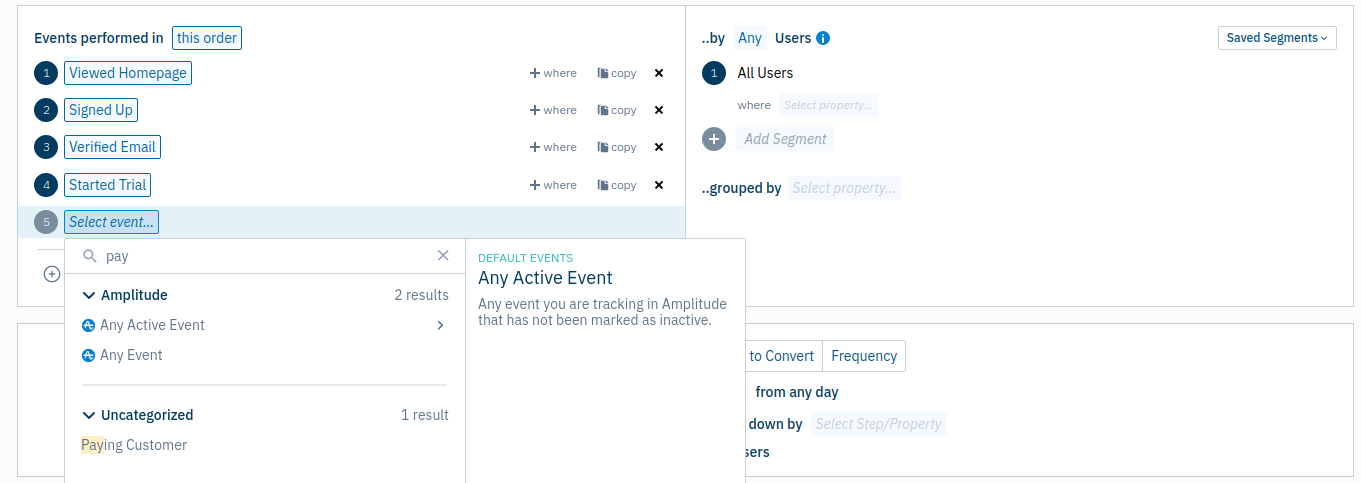
Once we have added our five conversion events, we can visualize them and see the drop-off. Each bar in the chart below shows the number of users who have made it to the next stage and gives us a sense of the drop-off.
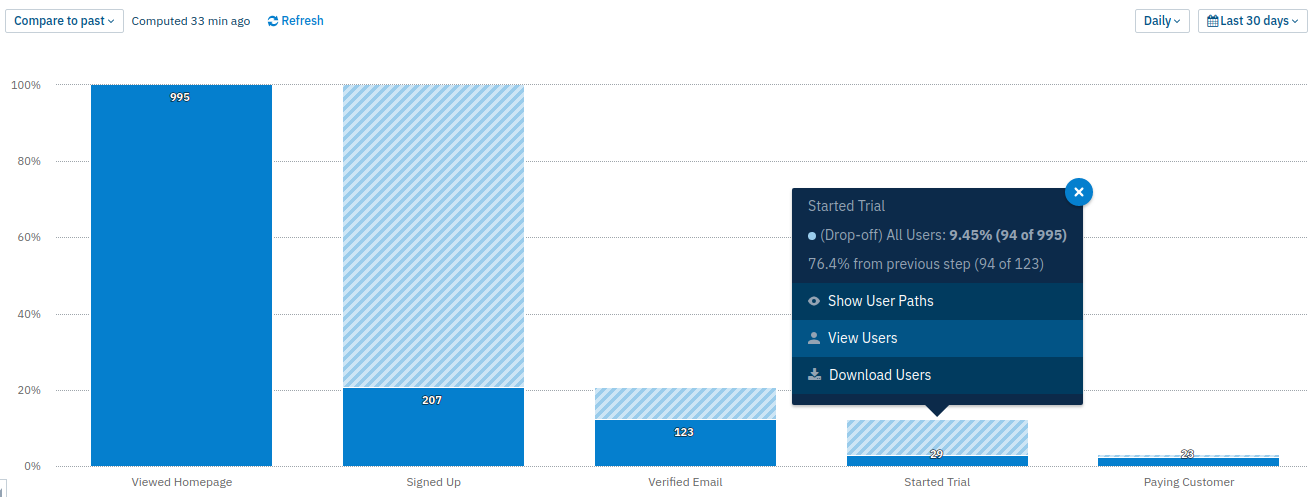
Amplitude also gives us a view of the individual users who fell off at each funnel stage. When we click in to “View Users”, we can then see the individual user records.
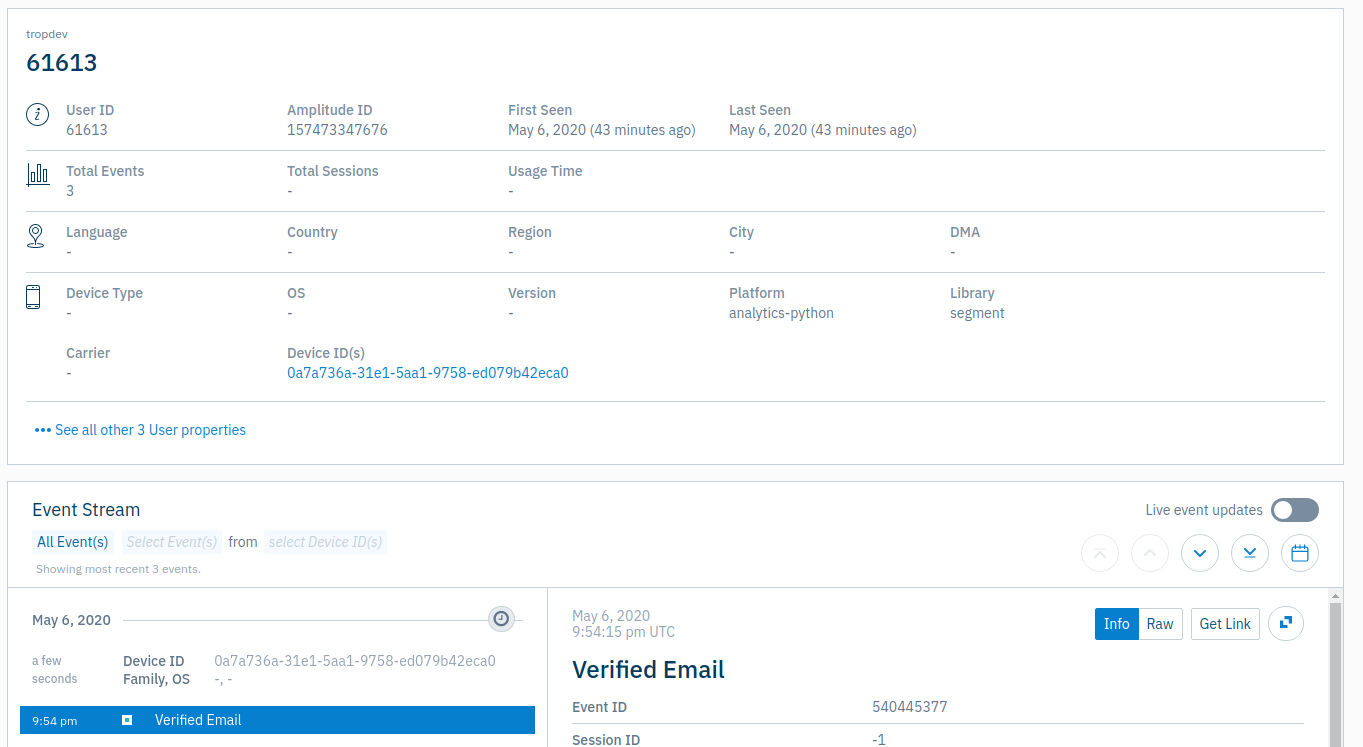
Of course, this will leave you wanting to know more about what’s happening with these specific users. Beyond those events, what’s stopping those users from getting to the next step?
Step 2: Watch 5-10 specific user journeys
Fortunately, there’s another tool that can help you do this. FullStory is a digital analytics tool that helps you analyze individual user journeys and “follow along” when a user hits a speed bump. Simply head to your Segment UI’s Destinations page, and add FullStory as a destination.
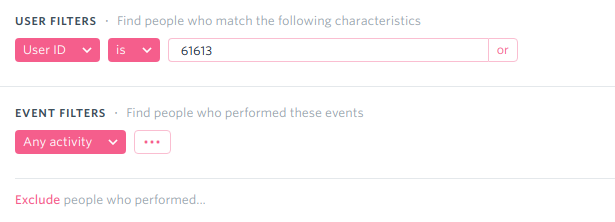
Once your data is flowing into FullStory and the FullStory’s recording snippet is initialized onto your page, you can filter for a particular User ID in FullStory.
From there, you can playback the full user session, and see when and why users are hitting issues. The below example is the FullStory recording of a user navigating the Segment web app.

We can then take this one step further by searching for the exact events we’re tracking in FullStory. We can measure the user’s progress and “follow along” to see exactly where they got de-railed.
After watching even 5-10 of these recordings, you can get a good idea where users are dropping off.
Step 3: A/B test and measure
Once we’ve identified the biggest opportunities for improvement in our funnel, it’s time to A/B test some different techniques for getting users back into the product.
Here are a few of the ideas we’ve found to be successful:
Optimize the first mile of your product
When a new user signs up, assume they have little to no previous knowledge of your tool.
It’s much better to:
Limit the options of what new users can do. If there are more than 3-4 paths new users can take, it’s too many! Limit the first steps your users can take to just a handful, to ensure they can make continued progress later on.
Optimize your “blank slate” experience. Because it’s their first interaction with the product, most of your new signups will be met with a “blank state” — a screen with no activity, history, or data. Design for this state with things like dummy data, tooltips, or interactive walkthroughs so new users aren’t crippled right out of the gate.
On that note…
Use in-app walkthroughs with Appcues or Intercom
We’re big fans of the principle of “show, don’t tell”. There are some handy tools in the Segment catalog like Appcues and Intercom which will let you create interactive onboarding walkthroughs and guide new users through your conversion funnel.
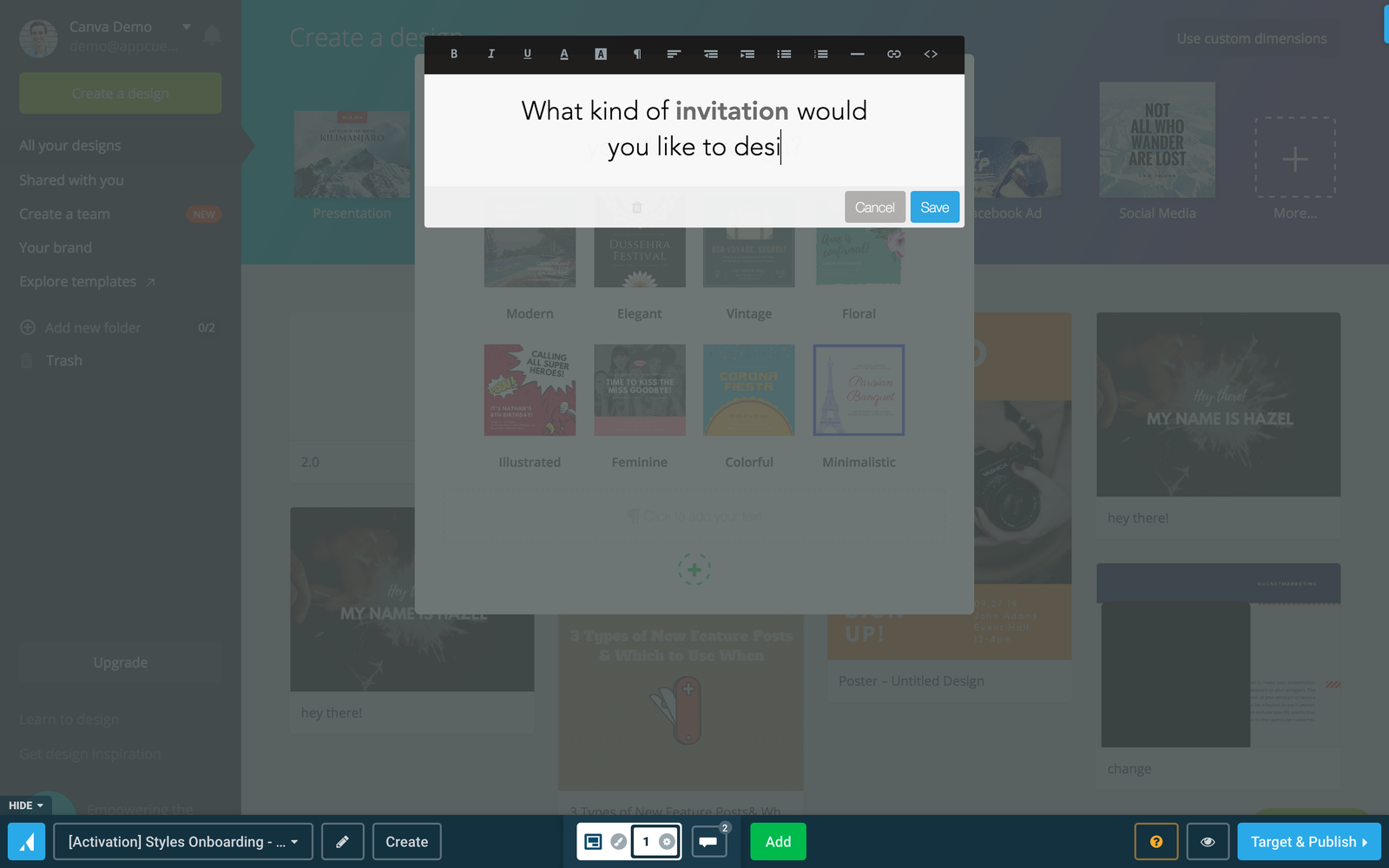
Email is a powerful tool to bring people back
If all else fails, email is one of the most powerful ways to bring users back. We’ve seen our conversion rates increase substantially thanks to a few well-timed emails.
To see more about how to run these campaigns, check out our recipe: Increase conversion with personalized lifecycle campaigns.
Try this recipe for yourself...
Get help implementing this use case by talking with a Segment Team member or by signing up for a free Segment workspace here.
The State of Personalization 2023
Our annual look at how attitudes, preferences, and experiences with personalization have evolved over the past year.
Get the report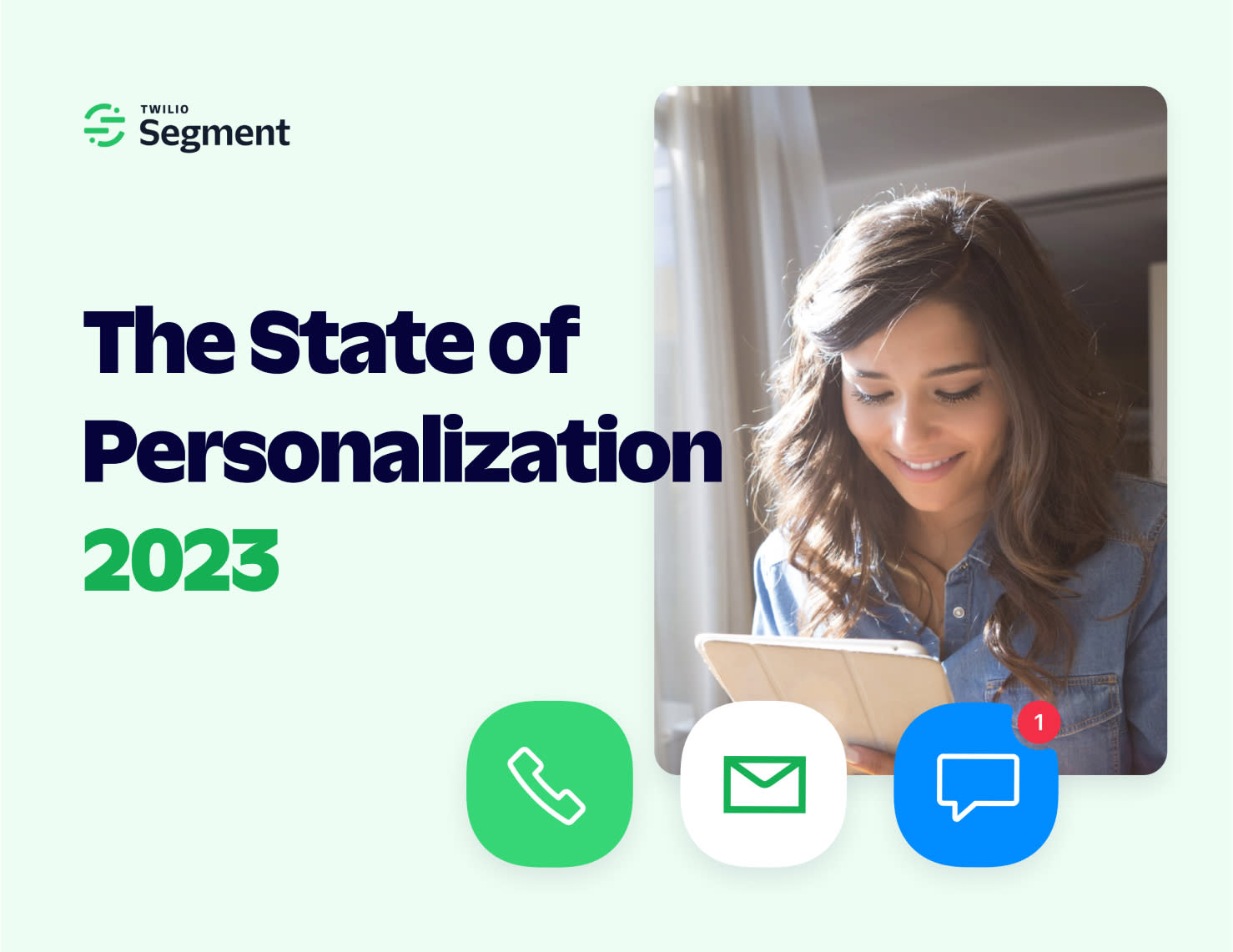
The State of Personalization 2023
Our annual look at how attitudes, preferences, and experiences with personalization have evolved over the past year.
Get the report
Share article
Recommended articles
How to accelerate time-to-value with a personalized customer onboarding campaign
To help businesses reach time-to-value faster, this blog explores how tools like Twilio Segment can be used to customize onboarding to activate users immediately, optimize engagement with real-time audiences, and utilize NPS for deeper customer insights.
Introducing Segment Community: A central hub to connect, learn, share and innovate
Dive into Segment's vibrant customer community, where you can connect with peers, gain exclusive insights, and elevate your success with expert guidance and resources!
Using ClickHouse to count unique users at scale
By implementing semantic sharding and optimizing filtering and grouping with ClickHouse, we transformed query times from minutes to seconds, ensuring efficient handling of high-volume journeys in production while paving the way for future enhancements.